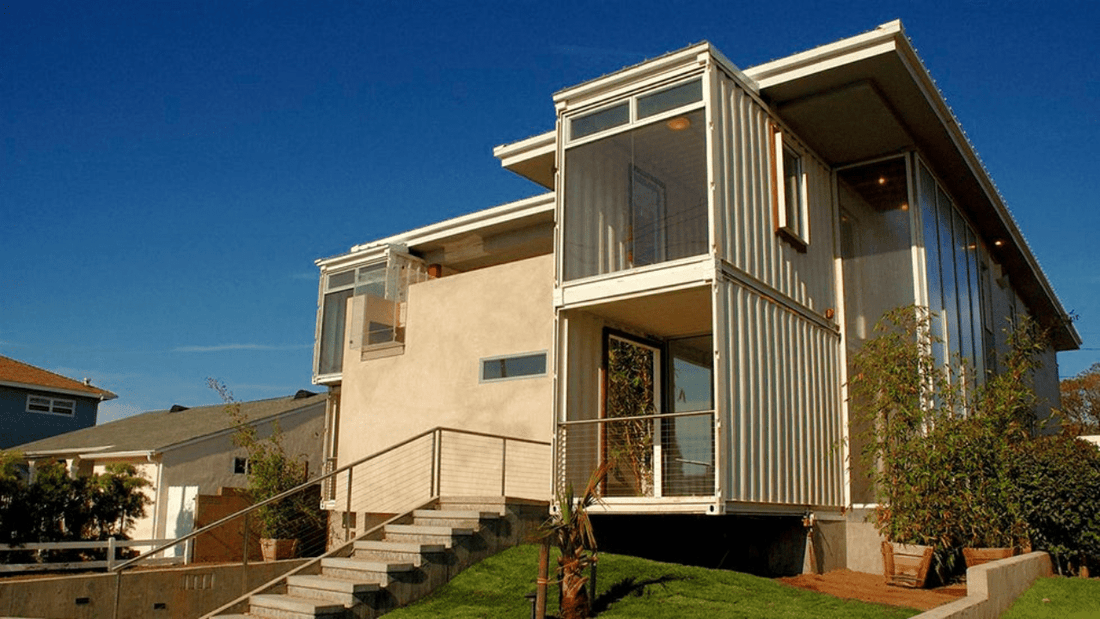
Inside Peter DeMaria’s Iconic Shipping Container Home in Redondo Beach
Share
Just blocks from the Pacific in Redondo Beach, California, one home stands out—not because of its size or flash, but because of what it's made from. Architect Peter DeMaria didn’t just think outside the box—he built with it. The Redondo Beach shipping container home, completed in 2006, redefined residential architecture by turning industrial steel into a coastal dream. Today, it remains a striking example of design ingenuity, sustainability, and West Coast creativity.
Where Modernism Meets Metal
At first glance, the home looks like something out of a design magazine with its clean lines, oversized windows, and confident mix of industrial and organic elements. What you don’t see immediately—unless you're in the know—is that this was the first permitted shipping container home built in the U.S. under the strict guidelines of the Uniform Building Code. DeMaria wasn’t just designing a cool structure; he was proving a point.
The house is constructed from eight repurposed shipping containers, a choice that turned heads in both architectural and real estate circles. But this wasn’t about novelty. For DeMaria, the containers offered structural integrity, affordability, and flexibility. “We’re not trying to make it look like a container,” he said. “We’re using the container as a legitimate, viable part of the architectural process.”
A Smart, Sustainable Approach
Shipping containers are inherently strong—they’re built to withstand the harshest ocean conditions—so they provided a solid framework without the need for excessive steel reinforcement. That saved time, money, and resources. But DeMaria didn’t stop there. The design also incorporates recycled materials, energy-efficient features, and passive cooling strategies. It’s a house that performs as well as it looks.
The steel containers were cut and customized off-site, then trucked in and craned into place. This modular approach significantly reduced construction waste and disruption to the neighborhood. And despite the unconventional materials, the final product blends surprisingly well into the beachside community.
Function Meets Form
Inside, the 3,500-square-foot space feels anything but industrial. With a layout designed to maximize light and openness, the home balances the raw texture of corrugated metal with warm wood finishes, sleek concrete floors, and high ceilings. Floor-to-ceiling windows flood the interior with sunlight, while wide glass doors open to the ocean breeze.
In some areas, their steel walls remain exposed, a nod to their original purpose. In others, they’re hidden behind drywall or natural materials, offering a softer, more refined look. The juxtaposition of grit and polish is intentional—and it works.
There’s a surprising sense of calm throughout the home. Maybe it’s the natural light or the open-plan design. Maybe it’s the thoughtful details, like the recycled wood cabinetry or the rooftop deck with sweeping views of the South Bay. Whatever it is, this place doesn’t just challenge ideas about what a home should be—it makes you rethink what a home could be.
Ahead of Its Time
When DeMaria designed the Redondo Beach container home nearly two decades ago, the concept of shipping container living was still considered unusual. Today, shipping container homes are everywhere—from rural off-grid cabins to urban housing projects. But this house was the pioneer. It proved that recycled materials could be the centerpiece of high-end architecture.
It also forced local building departments to reconsider what’s possible within traditional zoning and permitting frameworks. DeMaria worked closely with officials to ensure everything met code, creating a roadmap for future shipping container projects. In a way, this house helped legitimize the entire shipping container architecture movement.
Why It Still Matters
As housing prices soar and sustainability takes center stage, DeMaria’s Redondo Beach shipping container home feels more relevant than ever. It addresses key concerns—affordability, durability, and environmental impact—without sacrificing aesthetics. It also raises an important question: if we can build beautiful homes from industrial leftovers, why aren’t we doing more of it?
For aspiring homeowners, architects, and city planners, the message is clear. With smart design and a willingness to challenge the norm, it’s possible to create spaces that are not only affordable and sustainable but truly inspiring.
Peter DeMaria didn’t just design a house—he started a conversation. The Redondo Beach shipping container home isn’t just a novelty; it’s a landmark. It paved the way for a new kind of architecture, one that values sustainability without compromising on style.
Fill out the form below for a free shipping container quote from USA Containers:
